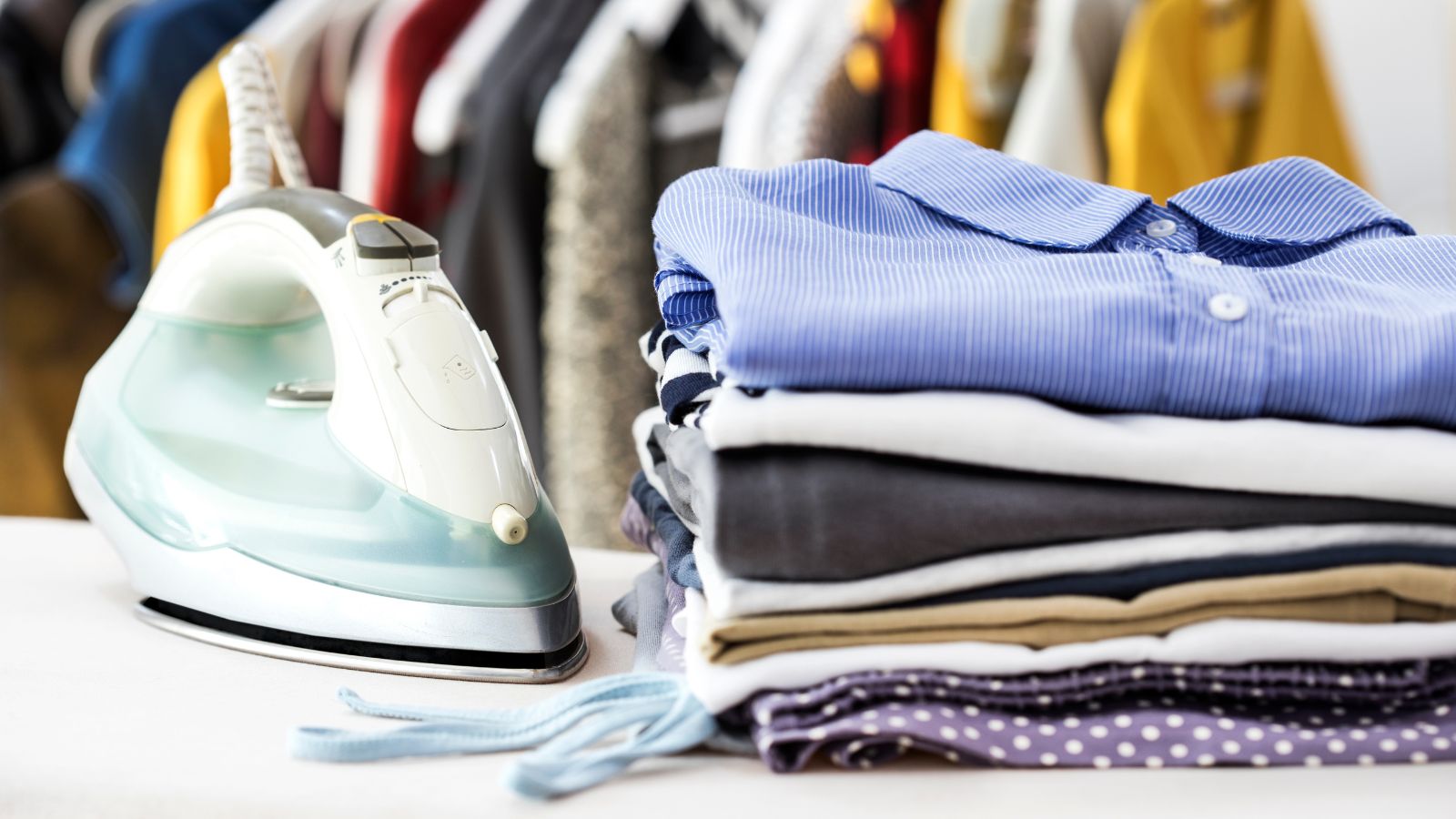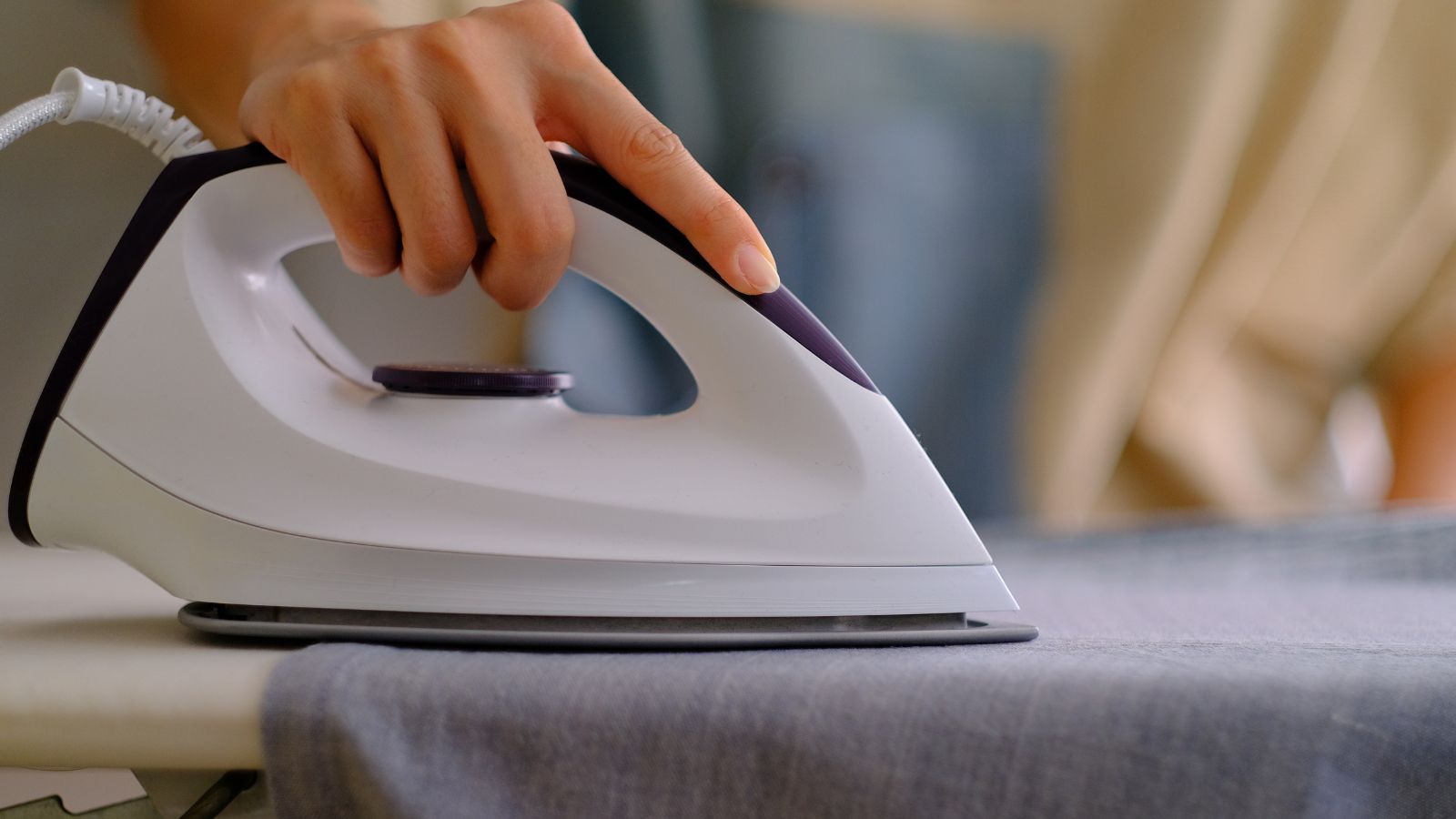
We can safely say that almost no one really likes ironing their clothes. Unless you’ve got a series on the TV or a podcast you’re looking to binge, it’s quite a dull task, especially if you’re having to do it regularly. If you think you want to give a shot at being a naked cleaner you should certainly learn how to do it properly, as this is one of the most frequently requested services among naked cleaners. Go ahead and take a few minutes to read our general Ironing Tips, useful for any naked cleaner.
Naked Cleaners Will Do Your Ironing
However, despite this, it’s a task that shouldn’t be hurried. If you don’t do it, take your time with it and do it correctly, you could not only burn yourself, but you could also damage your clothes and iron. Many choose to outsource the whole thing altogether, especially after finding out ironing clothes may cause muscle fatigue, as this study shows. And you know what? We cannot blame you. Once the idea that you can have this done by someone else is planted in your head, it will be super hard to let it go. So perhaps… just don’t! Do yourself a favour and upgrade the whole experience by ordering a naked cleaner. We’ve got a solid list of brilliant ironing tips to help you through even the most mundane of laundry days.
Don’t Iron Dirty Clothing
This might seem like common sense, but often people are in a hurry or forget to wash an item of clothing that they need in a hurry. However, if your shirt/dress has a stain on it, ironing it will simply make the stain more stubborn. When you expose a stained, oily, or dirty patch to the extreme heat of your iron, it will end up burnt into the fabric and is highly unlikely to ever come out, leaving them ruined and beyond repair.
Make Sure You Read the Label First
It’s very easy to assume that all clothing requires the same approach when it comes to ironing, but much like using a washing machine, the setting is important. Before you begin ironing, remember to double-check the heat settings. If you’re unsure of what temperature is best for the specific clothing item you’re currently ironing, double-check the label. For instance, specific fabrics call for differing heat settings. Delicate materials such as silk need to be ironed at a lower temperature than cotton, whereas items such as velvet, spandex, or suede should never be near an iron, as they’re too delicate for such extreme temperatures. After all, you don’t want your clothing to lose its shape or become damaged.
Get The Water Right
You’re probably thinking why on earth would I worry about the water in my iron, but it can cause more issues than you think. If you live in a hard water area, a build-up of limescale can damage and eventually completely break your iron. We recommend either using a water filter if you have one available to clear any limescale or impurities out of your water, boiling it in a kettle (and then allowing it to cool before pouring) or if possible, simply purchasing a bottle of water to use. This way, your iron performs as expected with no technical issues.
Hang Your Clothes Up As Soon As They’re Ironed
This one is mostly for your peace of mind and general tidiness. If you’ve got a pile of laundry that needs ironing and another pile next to it you’ve just ironed, it can feel like a never-ending task. Also, if you fold your clothes straight after they’ve been ironed you can risk creasing them again. Put them straight onto hangers and into a fresh clean wardrobe to keep them in the best condition.

The Tinfoil Hack
The tinfoil hack (or the aluminium foil hack as it’s known in America) is the act of adding a layer of tin foil under the ironing board cover so that items become crease-free quicker. This is because the foil reflects heat straight onto the underside of garments, effectively acting like a second iron, saving you half the time. When applying the tin foil, cover the entire board’s shiny side up, then re-apply you’re ironing board cover and make sure it’s fitted properly, as you don’t want it coming to loose when you’ve got a hot metal sheet in front of you. We’d recommend being very careful with this much heat, making sure the foil is completely cooled before you remove it from the board to avoid any burns.
Do Everything in Order
Firstly, allow your iron to heat up properly so you’re not ironing for even longer than you need to be, and at the end when you’re all done, make sure it’s fully cooled before packing it away as you may cause damage to any items it’s placed near. To avoid repeatedly changing settings, organize your laundry into neat individual piles according to fabric type during the warm-up period. For example, group all of the delicates together, cotton shirts in one pile, and bedding in another. Start with the items that require the lowest temperature (so you have the shortest wait time) and raise the temperature as you go. If you accidentally start with a high heat setting, be sure to wait until your iron has cooled before tackling more delicate objects. The last thing you want is to burn your delicate items because the iron is too hot at the beginning. Plus, starting with a lower temperature allows you to get started sooner, rather than waiting too much longer.
Spritz
Not all materials take to heat as well as others but spraying with just a little water out of a spritz bottle (don’t soak your clothes), makes the material easy to manage and allows them to take to the heat much easier, for a smoother experience. You can buy specific ironing water, but some of them can contain scents and chemicals which may damage your iron. We’d recommend using bottled, filtered, boiled, or just plain tap water.
Iron Your Items Inside Out
Certain clothes don’t react well to being ironed, a few of those materials we’ve already mentioned. Some clothes may have a design or pattern or even a patch on you don’t want to risk getting damaged, so a handy little trick is to turn the clothes inside out to avoid damage. Another thing you can do is to use an ironing cloth as a barrier between the iron and your clothes. If you don’t have one available, a simple household tea towel or dishcloth will work just as well, providing it’s clean and made of a material suitable for being ironed.
Looking for more useful advice for an aspiring Naked Cleaner? We’ve got you covered – just take a look at our blog.
















